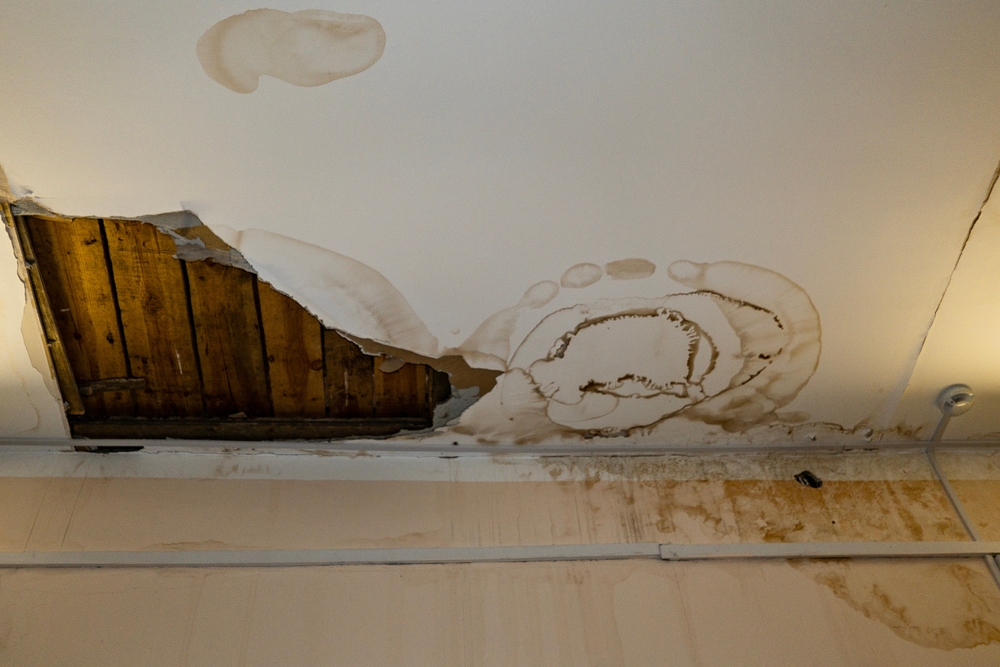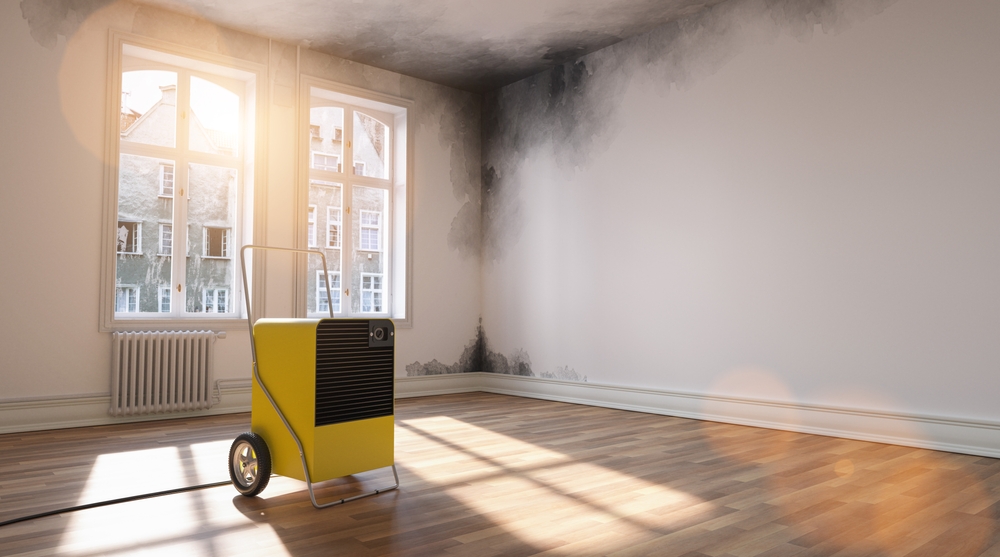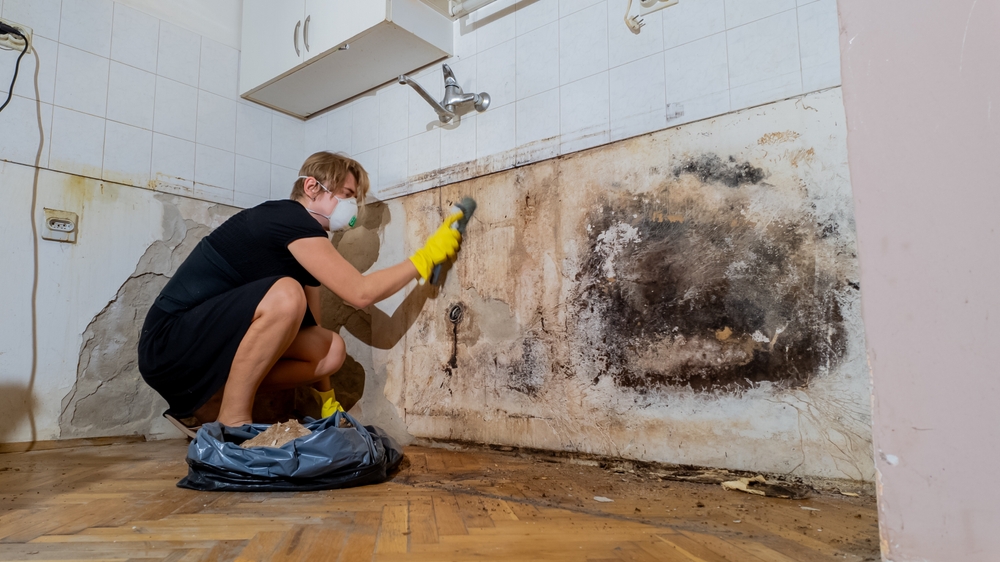Water damage may be an upsetting and perplexing event. Knowing what to expect during a water damage restoration visit will help you greatly whether your house or property is impacted. This guide will bring you through the whole procedure in plain, understandable language so you feel confident and informed at every stage. We will go over everything in great detail from the first call till the last restoration plan is developed. By the conclusion, you will know why it’s crucial to consult professionals for assistance and how a competent water damage restoration inspection operates.
Imagine waking up to see unusual puddles on your floor or water marks on your ceiling. Suddenly occurring water damage causes concern about the security of your house. Solving the issue starts with a qualified water damage restoration inspection. Professionals arrive, evaluate the damage, and draft a repair schedule. Here on this blog post is meant to assist in your grasp of the inspection procedure. To help you feel more in control at a difficult period and know what to expect during a water damage assessment, we will break out each stage in easy terms.
Understanding the Initial Contact and Scheduling
First time you phone a water damage restoration firm, you will speak with a friendly agent. They will probe several crucial aspects of the water damage. When the damage happened, where it is, and whether you have observed any changes in your house could be questions asked. This clarifies the matter for them and gets them ready for the visit.
The organization will arrange an examination as soon as feasible following the contact. Stopping more damage depends mostly on a rapid reaction. Sometimes the team might advise you on quick, basic actions you could take right away, such as cutting off the water supply or relocating valuables to a secure location. To further organize you, they could also offer a simple water damage inspection checklist. This first contact prepares the ground for a flawless and businesslike water damage repair operation.

The Arrival and Initial Assessment
A crew of experts will show up on your property the day of the inspection. They will bring certain tools to begin the assessment and don protective clothing. They will search every obvious spot where water damage could be present during their first go through. This covers floors, ceilings, walls, even secret areas beneath furniture.
Throughout the inspection, the restoration crew will record notes and pictures. For insurance as much as for the repair process, documentation of the damage is absolutely vital. They will probe you regarding when you first saw the damage and any changes you saw in your house. This dialogue enables them to create the whole image of the situation. By demonstrating that specialists are on the job and that every aspect is being meticulously recorded, the arrival and initial inspection are meant to ease your concerns overall.
Detailed Inspection and Moisture Detection
The procedure of inspection enters a more thorough phase following the first assessment. Since it enables the professionals to grasp the whole degree of the injury, this stage is really crucial. They make use of particular instruments such infrared cameras and moisture meters. These instruments can find invisible to the human sight hidden water. Technicians can inspect inside walls, under floors, and in ceilings by use of moisture detecting devices. This guarantees that no area with too much moisture goes ignored.
The crew will meticulously inspect several areas of your house. To ascertain how much water has been absorbed, they will, for instance, check the moisture levels in the floor and walls. To detect temperature variations—which might point to the presence of water—they also employ infrared cameras. Using these techniques, the inspection team searches for hidden as well as evident water damage extensively.
The thorough inspection is also the moment when the professionals follow the water damage source. They search for leaks, damaged pipelines, or any other possible cause of the problem. Finding the source will enable them to suggest the best methods of preventing additional damage by means of water damage mitigating measures. Every stage of this thorough inspection is a part of a rigorous water damage assessment process guaranteed to make sure your house will be safe and sound following repairs.
Damage Assessment and Categorization
Evaluation and classification of the damage comes next once the inspection is over. Different specialists classify water damage since it is not all the same. These classification include black, gray, and pure water. From a safe source—a broken water pipe—clean water is While black water is quite dirty and comes from sewage or flooding, gray water could originate from washing machines. Knowing the kind of water will enable the team to make appropriate decisions on safe cleaning and restoration of your house.
The professionals in restoration will record which items the water affects. They look for ceiling, floor, and wall structural issues. Every detail—including any weak areas where mold can develop later—is captured using our water damage inspection checklist. They also assess whether carpeting, drywall, or insulation calls for replacement. Searching for hidden moisture is part of the procedure; if not adequately treated, this could cause mold.
The crew also searches for any indications of mold development or possibility for such in the next days. Early identification of these risks via a thorough water damage assessment guarantees that mold inspection and remedial action may be carried out as required. Ensuring that you get the best and safest service available, this classification procedure is a necessary component of the water damage restoration process.

Creating the Restoration Plan and Estimate
Creating a comprehensive restoration strategy comes next once the damage has been fully evaluated and classified. The results of the inspection guide the team in choosing their best line of action. Usually, this scheme calls for processes in water extraction, drying, dehumidification, cleaning, and sanitization. Every action is precisely written out to enable you to grasp the procedure and what has to be done.
Along with the restoration plan is an estimate. This estimate provides a thorough record of the expenses of damage restoration. The staff might assist you with the claims procedure by working with your insurance provider. They will go over the estimate with you, going over every element of the plan and how it will help your house to be restored.
In this point, clear communication is really vital. Any queries you have will be answered by the experts, who also ensure you grasp every component of the plan. They want to make sure you approach the process confident and at ease. The professionals gain credibility and demonstrate their commitment to assist you safely and effectively rebuild your house by outlining a clear and thorough plan.
Potential for Mold Inspection and Remediation
Water damage can provide the ideal habitat for mold development. Many inspections hence incorporate a mold inspection. Experts search for indicators of mold growth, such discolouration or a musty scent, during this stage of the process. They might also gather samples to look for mold in otherwise invisible locations.
Should mold be discovered, the restoration crew will outline the mold remedial process. Mold treatment is to safely remove and eliminate mold so as to prevent its spread. For more severe situations, occasionally a separate mold cleanup specialist could be required. This stage is crucial as, untreated, mold can lead to health problems.
The team will let you know about any mold-related symptoms and future looking points. They might provide advice on how to prevent mold development and maintain low moisture levels. Protecting your house and guaranteeing a safe living environment depend critically on early addressing of mold as part of the water damage inspection.

What Happens After the Inspection
You will get a clear synopsis of the results and the next actions when the thorough inspection is over. The restoration business will go over the findings with you and break out the restoration strategy into understandable language. They will inform you on the expected length of work, when it will begin, and what has to be done.
Maintaining open lines of contact throughout this period is vital. You can be requested to tidy your house for the repair work or assist with some little chores. The team will also talk about continuous monitoring since moisture levels could change with time to make sure no concealed water stays.
This step of post-inspection is aimed to reassure you that every element of the water damage restoration procedure is under great control. Expert restoration services put great effort to ensure that your house is returned to a safe and pleasant state.
Conclusion
Getting your house back to normal depends first on a water damage restoration inspection. From the first call and appointment to the thorough inspection and last restoration plan, every action is meant to safeguard your property and guarantee your safety. Careful water damage assessment combined with moisture detection techniques will help professional restoration service find hidden damage and stop more issues. Should you find water damage, keep in mind that early action and expert inspection are quite vital. Don’t wait to start the process of recovering your house by calling a respectable water damage restoration company right now.
Philadelphia Restoration Services
https://www.google.com/maps?cid=3399342399556699153
+1 267 668 0013
https://philadelphiarestorationservices.com/


